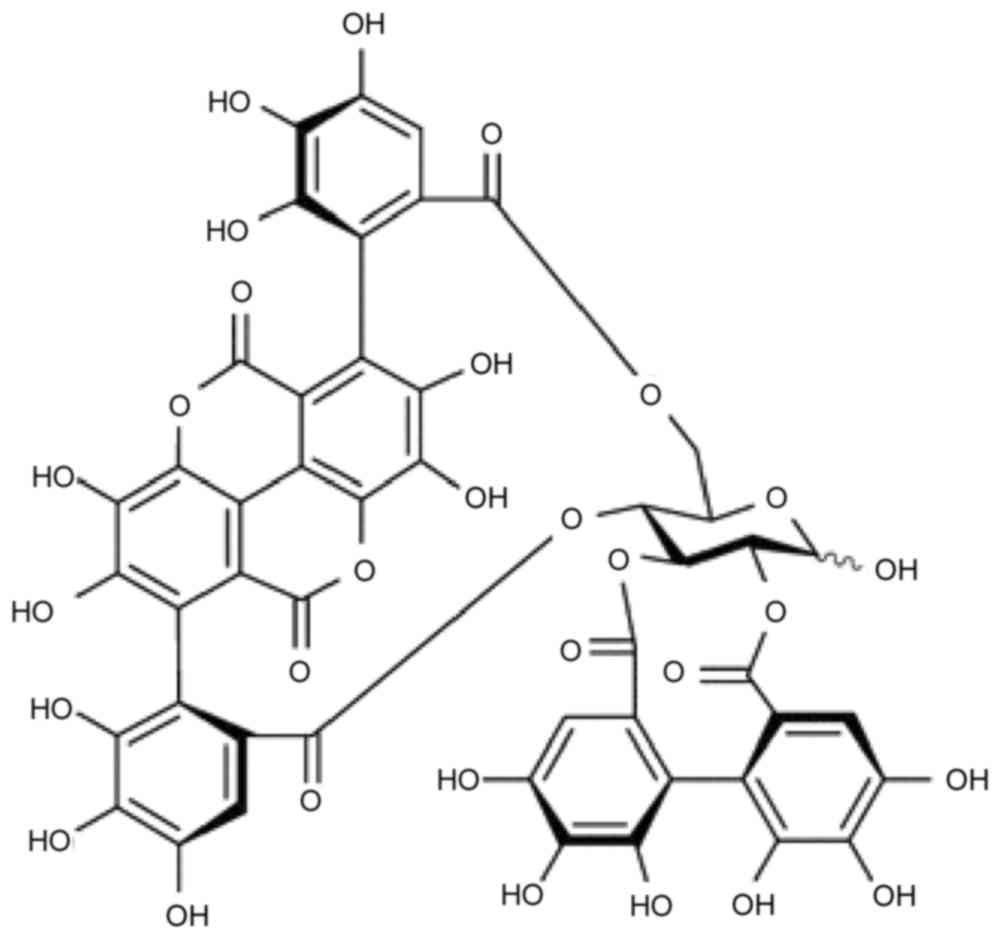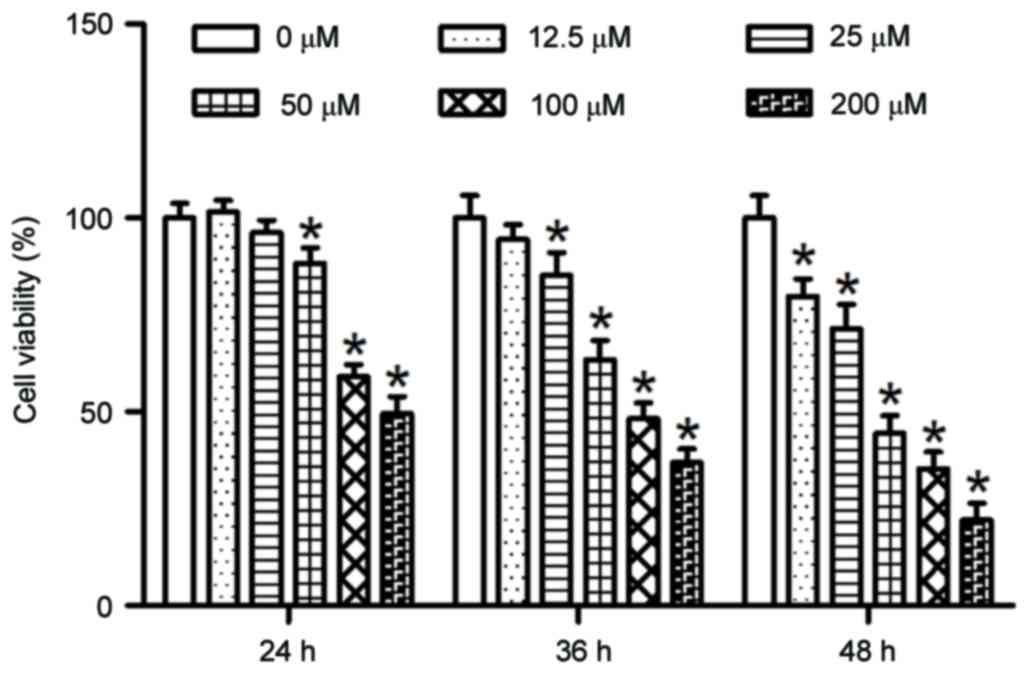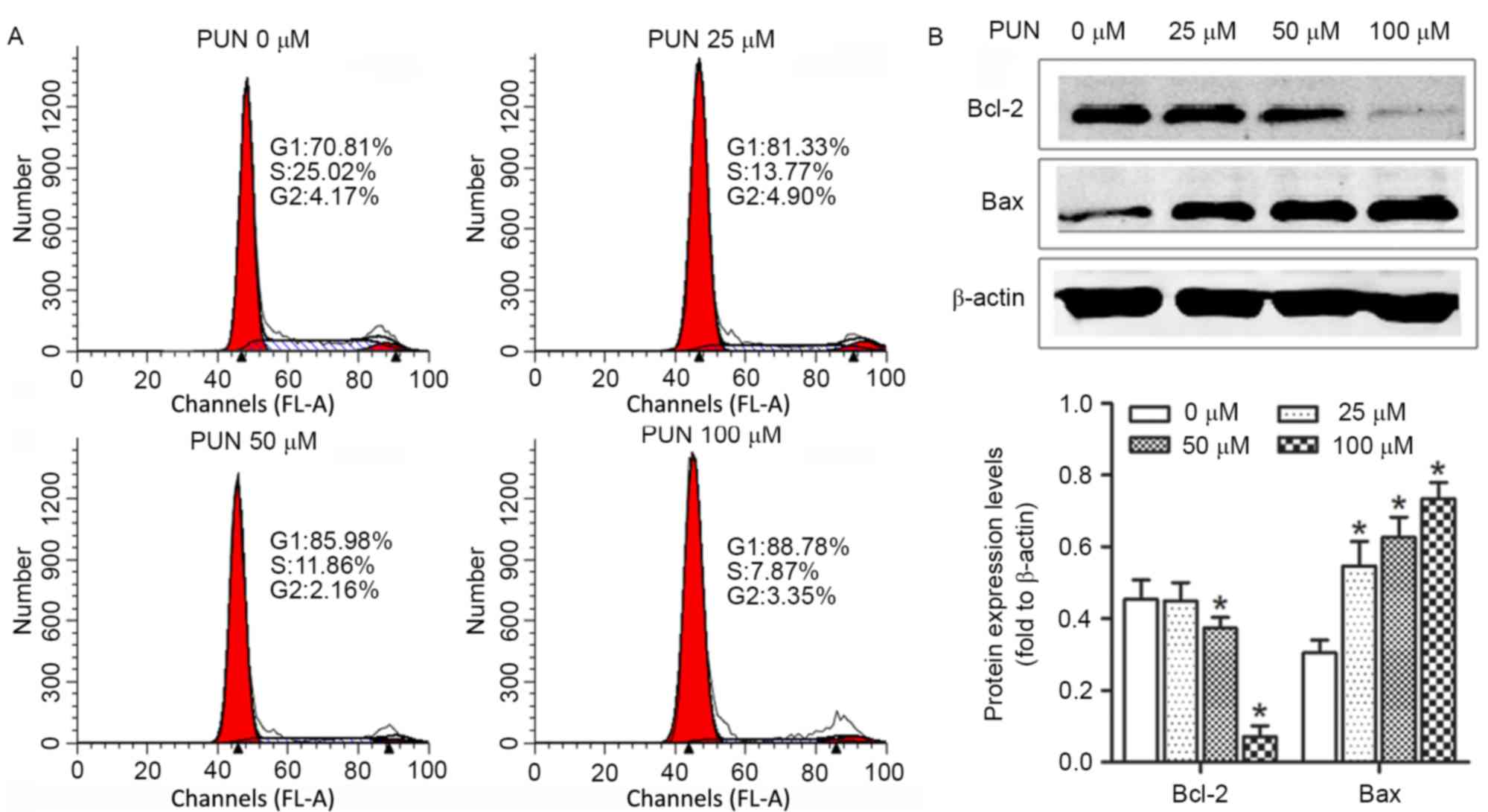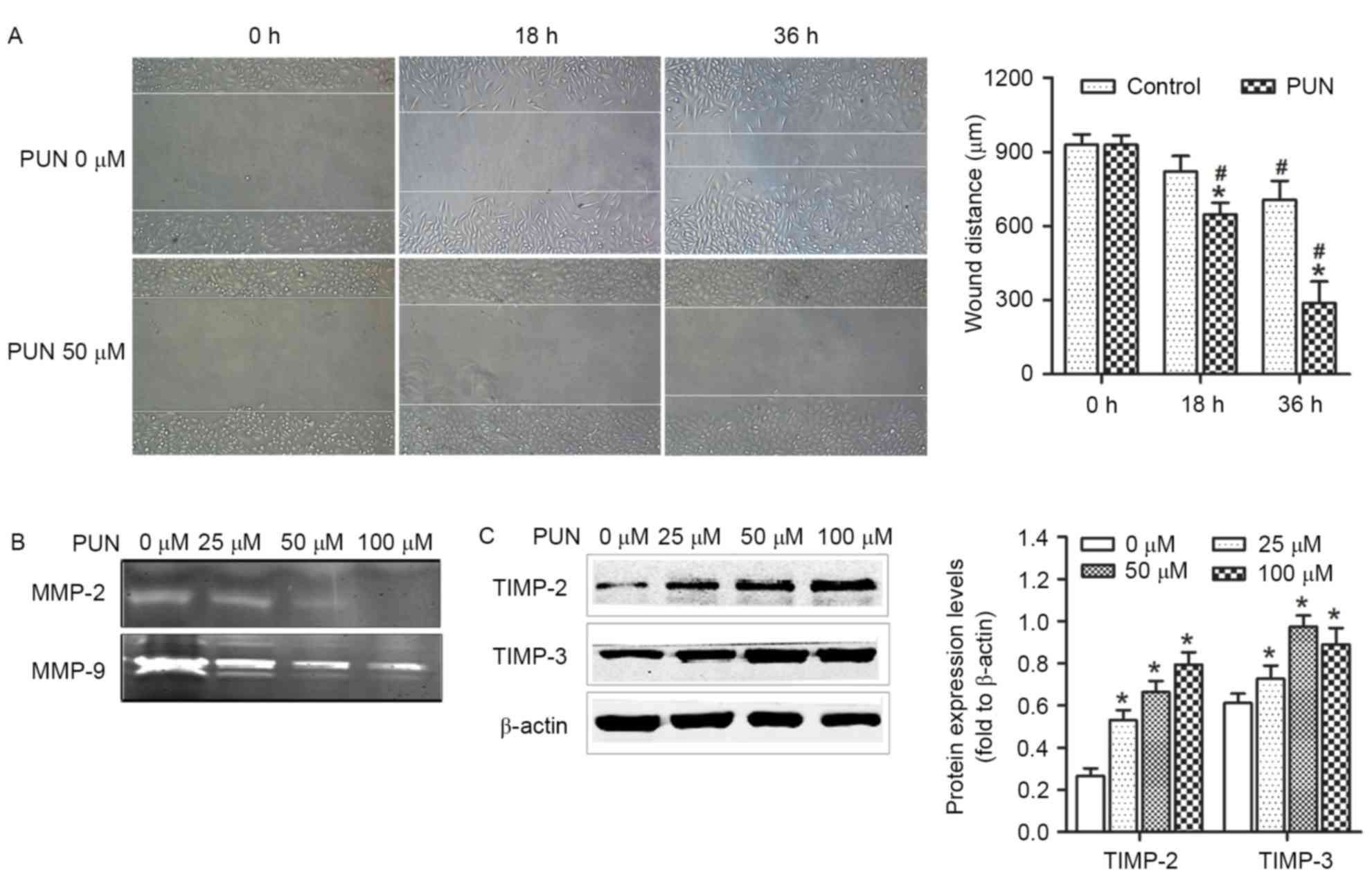|
1
|
Liao CJ, Wu TI, Huang YH, Chang TC, Lai
CH, Jung SM, Hsueh C and Lin KH: Glucose-regulated protein 58
modulates β-catenin protein stability in a cervical adenocarcinoma
cell line. BMC Cancer. 14:5552014. View Article : Google Scholar : PubMed/NCBI
|
|
2
|
Li F, Wang T and Tang S: SOX14 promotes
proliferation and invasion of cervical cancer cells through
Wnt/β-catenin pathway. Int J Clin Exp Pathol. 8:1698–1704.
2015.PubMed/NCBI
|
|
3
|
Ljubojevic S and Skerlev M: HPV-associated
diseases. Clin Dermatol. 32:227–234. 2014. View Article : Google Scholar : PubMed/NCBI
|
|
4
|
Li H, Jiao S, Li X, Banu H, Hamal S and
Wang X: Therapeutic effects of antibiotic drug tigecycline against
cervical squamous cell carcinoma by inhibiting Wnt/β-catenin
signaling. Biochem Biophys Res Commun. 467:14–20. 2015. View Article : Google Scholar : PubMed/NCBI
|
|
5
|
Mehta R and Lansky EP: Breast cancer
chemopreventive properties of pomegranate (Punica granatum) fruit
extracts in a mouse mammary organ culture. Eur J Cancer Prev.
13:345–348. 2004. View Article : Google Scholar : PubMed/NCBI
|
|
6
|
Aslam MN, Lansky EP and Varani J:
Pomegranate as a cosmeceutical source: Pomegranate fractions
promote proliferation and procollagen synthesis and inhibit matrix
metalloproteinase-1 production in human skin cells. J
Ethnopharmacol. 103:311–318. 2006. View Article : Google Scholar : PubMed/NCBI
|
|
7
|
Malik A, Afaq F, Sarfaraz S, Adhami VM,
Syed DN and Mukhtar H: Pomegranate fruit juice for chemoprevention
and chemotherapy of prostate cancer. Proc Natl Acad Sci USA.
102:14813–14818. 2005. View Article : Google Scholar : PubMed/NCBI
|
|
8
|
Larrosa M, Tomás-Barberán FA and Espín JC:
The dietary hydrolysable tannin punicalagin releases ellagic acid
that induces apoptosis in human colon adenocarcinoma Caco-2 cells
by using the mitochondrial pathway. J Nutr Biochem. 17:611–625.
2006. View Article : Google Scholar : PubMed/NCBI
|
|
9
|
Khan N, Hadi N, Afaq F, Syed DN, Kweon MH
and Mukhtar H: Pomegranate fruit extract inhibits prosurvival
pathways in human A549 lung carcinoma cells and tumor growth in
athymic nude mice. Carcinogenesis. 28:163–173. 2007. View Article : Google Scholar : PubMed/NCBI
|
|
10
|
Syed DN, Malik A, Hadi N, Sarfaraz S, Afaq
F and Mukhtar H: Photochemopreventive effect of pomegranate fruil
extract on UVA-mediated activation of cellular pathways in normal
human epidermal keratinocytes. Photochem Photobiol. 82:398–405.
2006. View Article : Google Scholar : PubMed/NCBI
|
|
11
|
Malik A and Mukhtar H: Prostate cancer
prevention through pomegranate fruit. Cell Cycle. 5:371–373. 2006.
View Article : Google Scholar : PubMed/NCBI
|
|
12
|
Aqil F, Munagala R, Vadhanam MV, Kausar H,
Jeyabalan J, Schultz DJ and Gupta RC: Anti-proliferative activity
and protection against oxidative DNA damage by punicalagin isolated
from pomegranate husk. Food Res Int. 49:345–353. 2012. View Article : Google Scholar : PubMed/NCBI
|
|
13
|
Jean-Gilles D, Li L, Vaidyanathan VG, King
R, Cho B, Worthen DR, Chichester CO III and Seeram NP: Inhibitory
effects of polyphenol punicalagin on type-II collagen degradation
in vitro and inflammation in vivo. Chem Biol Interact. 205:90–99.
2013. View Article : Google Scholar : PubMed/NCBI
|
|
14
|
Li G, Feng Y, Xu Y, Wu Q, Han Q, Liang X,
Yang B, Wang X and Xia X: The anti-infective activity of
punicalagin against Salmonella enterica subsp. enterica serovar
typhimurium in mice. Food Funct. 6:2357–2364. 2015. View Article : Google Scholar : PubMed/NCBI
|
|
15
|
Seeram NP, Adams LS, Henning SM, Niu Y,
Zhang Y, Nair MG and Heber D: In vitro antiproliferative, apoptotic
and antioxidant activities of punicalagin, ellagic acid and a total
pomegranate tannin extract are enhanced in combination with other
polyphenols as found in pomegranate juice. J Nutr Biochem.
16:360–367. 2005. View Article : Google Scholar : PubMed/NCBI
|
|
16
|
Syed DN, Afaq F and Mukhtar H: Pomegranate
derived products for cancer chemoprevention. Semin Cancer Biol.
17:377–385. 2007. View Article : Google Scholar : PubMed/NCBI
|
|
17
|
Xu X, Li H, Hou X, Li D, He S, Wan C, Yin
P, Liu M, Liu F and Xu J: Punicalagin Induces Nrf2/HO-1 Expression
via upregulation of PI3K/AKT pathway and inhibits LPS-induced
oxidative stress in RAW264.7 macrophages. Mediators Inflamm.
2015:3802182015. View Article : Google Scholar : PubMed/NCBI
|
|
18
|
Wang SG, Huang MH, Li JH, Lai FI, Lee HM
and Hsu YN: Punicalagin induces apoptotic and autophagic cell death
in human U87MG glioma cells. Acta Pharmacol Sin. 34:1411–1419.
2013. View Article : Google Scholar : PubMed/NCBI
|
|
19
|
Chen LG, Huang WT, Lee LT and Wang CC:
Ellagitannins from Terminalia calamansanai induced apoptosis in
HL-60 cells. Toxicol In Vitro. 23:603–609. 2009. View Article : Google Scholar : PubMed/NCBI
|
|
20
|
Lansky EP and Newman RA: Punica granatum
(pomegranate) and its potential for prevention and treatment of
inflammation and cancer. J Ethnopharmacol. 109:177–206. 2007.
View Article : Google Scholar : PubMed/NCBI
|
|
21
|
Arend RC, Londoño-Joshi AI, Straughn JM Jr
and Buchsbaum DJ: The Wnt/β-catenin pathway in ovarian cancer: A
review. Gynecol Oncol. 131:772–779. 2013. View Article : Google Scholar : PubMed/NCBI
|
|
22
|
Afaq F, Zaid MA, Khan N, Dreher M and
Mukhtar H: Protective effect of pomegranate-derived products on
UVB-mediated damage in human reconstituted skin. Exp Dermatol.
18:553–561. 2009. View Article : Google Scholar : PubMed/NCBI
|
|
23
|
Aroui S, Najlaoui F, Chtourou Y, Meunier
AC, Laajimi A, Kenani A and Fetoui H: Naringin inhibits the
invasion and migration of human glioblastoma cell via
downregulation of MMP-2 and MMP-9 expression and inactivation of
p38 signaling pathway. Tumour Biol. 37:3831–3839. 2016. View Article : Google Scholar : PubMed/NCBI
|
|
24
|
Hussain A, Harish G, Prabhu SA, Mohsin J,
Khan MA, Rizvi TA and Sharma C: Inhibitory effect of genistein on
the invasive potential of human cervical cancer cells via
modulation of matrix metalloproteinase-9 and tissue inhibitiors of
matrix metalloproteinase-1 expression. Cancer Epidemiol.
36:e387–e393. 2012. View Article : Google Scholar : PubMed/NCBI
|
|
25
|
Lu H, Cao X, Zhang H, Sun G, Fan G, Chen L
and Wang S: Imbalance between MMP-2, 9 and TIMP-1 promote the
invasion and metastasis of renal cell carcinoma via SKP2 signaling
pathways. Tumour Biol. 35:9807–9813. 2014. View Article : Google Scholar : PubMed/NCBI
|
|
26
|
Howell AB and D'Souza DH: The pomegranate:
Effects on bacteria and viruses that influence human health. Evid
Based Complement Alternat Med. 2013:6062122013. View Article : Google Scholar : PubMed/NCBI
|














